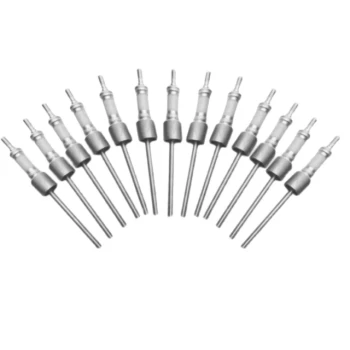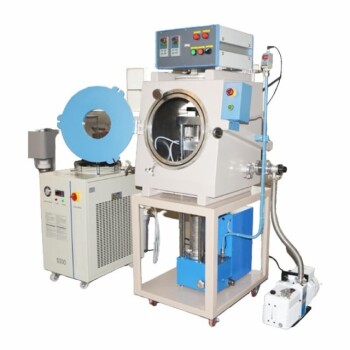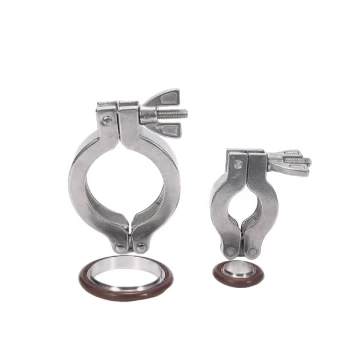For a typical water circulating vacuum pump, the sucking rate for a single tap is 10 liters per minute (L/min). This specification defines the pump's displacement—the volume of gas it can move from an inlet at atmospheric pressure in a given amount of time.
While the 10 L/min sucking rate defines its speed, the true value of this pump lies in its operational simplicity and oil-free design. Understanding its vacuum depth and how it operates is critical to determining if it meets your specific laboratory needs.

Understanding the Key Performance Metrics
To properly evaluate this pump, you must look beyond the sucking rate and consider its ultimate vacuum capability and the medium it uses.
Sucking Rate (Pumping Speed)
The sucking rate of 10 L/min is the volume of air the pump can displace per minute. This metric is most relevant at the beginning of the pump-down process when the system pressure is near atmospheric levels.
Maximum Vacuum (Ultimate Pressure)
The pump's ability to create a vacuum is specified as a maximum of 0.098 MPa. This value represents the pressure reduction from the standard atmospheric pressure (approx. 0.101 MPa).
This means the pump can lower the pressure inside a sealed system to an absolute pressure of around 20-30 mbar (0.020-0.030 MPa). This ultimate pressure, not the sucking rate, determines the lowest boiling point you can achieve for distillations or the efficiency of processes requiring low pressure.
The Role of Water as the Working Medium
These pumps use circulating water to generate the vacuum. This design choice is fundamental to its primary advantages: it operates without oil and, therefore, introduces no risk of oil-based contamination into your system.
The Principle of Operation and Its Implications
The pump's design directly influences its performance, efficiency, and practical benefits.
How It Works: The Venturi Effect
The vacuum is generated by the Venturi effect. Water is pumped at high velocity through a jet, creating a low-pressure zone that draws in air and other gases from the connected apparatus. The air mixes with the water stream and is then expelled.
Inherent Efficiency
This mechanism, while simple and reliable, has a general efficiency of around 30%, with some high-end models reaching 50%. It is not as energy-efficient as mechanical pumps but offers significant trade-offs in cost and maintenance.
Practical Advantages
The simple design results in several user-friendly characteristics. The pump is known for its low noise, flexible use, and lack of oil changes. Many models are also furnished with casters, making them convenient to move around a lab.
Understanding the Trade-offs
No single solution is perfect. The water circulating pump's strengths in one area create limitations in others.
Moderate Vacuum Depth
The ultimate pressure of ~20 mbar is sufficient for many applications, such as filtration or rotary evaporation of solvents with high boiling points. However, it is not a "high vacuum" pump and is unsuitable for applications requiring pressures below 1 mbar.
Dependence on Water Temperature
The pump's performance is directly tied to the vapor pressure of the circulating water. Colder water will produce a deeper vacuum because it has a lower vapor pressure. As water warms during operation, the ultimate vacuum level will degrade.
Water Contamination
While the pump itself is oil-free, volatile solvents from your experiment can dissolve into the circulating water. Over time, this can affect pump performance and may require the water to be changed periodically to maintain efficiency and comply with waste disposal rules.
Is This Pump Right for Your Application?
Choosing the correct vacuum source requires matching the tool to your specific scientific goal.
- If your primary focus is general lab filtration or evaporating solvents like water or ethanol: The 10 L/min rate and moderate vacuum are perfectly adequate and offer a cost-effective, low-maintenance solution.
- If your primary focus is removing low-boiling-point solvents (e.g., dichloromethane, ether) or performing high-vacuum work: You will need a pump capable of a deeper vacuum, such as an oil-free diaphragm pump or a rotary vane pump.
- If your primary focus is maintaining a completely oil-free environment for sensitive samples: This pump is an excellent choice over traditional oil-sealed pumps, effectively eliminating the risk of hydrocarbon contamination.
By understanding both the speed and limitations of this pump, you can confidently select the right tool for your work.
Summary Table:
| Metric | Specification |
|---|---|
| Sucking Rate (Single Tap) | 10 L/min |
| Maximum Vacuum | 0.098 MPa (absolute pressure ~20-30 mbar) |
| Working Medium | Circulating Water |
| Key Advantages | Oil-Free, Low Noise, Easy Mobility |
| Efficiency | ~30-50% |
Upgrade your lab with KINTEK's advanced vacuum solutions! Leveraging exceptional R&D and in-house manufacturing, we provide diverse laboratories with high-temperature furnaces and custom vacuum systems tailored to your unique needs. Our product line includes Muffle, Tube, Rotary Furnaces, Vacuum & Atmosphere Furnaces, and CVD/PECVD Systems, all designed for precision and reliability. Contact us today to discuss how we can enhance your experimental efficiency and achieve superior results!
Visual Guide

Related Products
- Ultra Vacuum Electrode Feedthrough Connector Flange Power Lead for High Precision Applications
- CF KF Flange Vacuum Electrode Feedthrough Lead Sealing Assembly for Vacuum Systems
- Vacuum Hot Press Furnace Machine for Lamination and Heating
- High Performance Vacuum Bellows for Efficient Connection and Stable Vacuum in Systems
- 1400℃ High Temperature Laboratory Tube Furnace with Quartz and Alumina Tube
People Also Ask
- What materials are used for the heating elements in a vacuum furnace? Choose the Right Element for Your High-Temp Needs
- How to increase the vacuum pressure? Master the Balance Between Gas Load and Pumping Speed
- What combination of pumps is typically used for vacuum sintering furnaces? Boost Efficiency with Rotary Vane & Roots Pumps
- How does the retort in a hot wall furnace prevent collapsing under vacuum? Key Design Insights for Durability
- What are the specifications of the vacuum system in PECVD equipment? Optimize Your Thin-Film Deposition Process



















